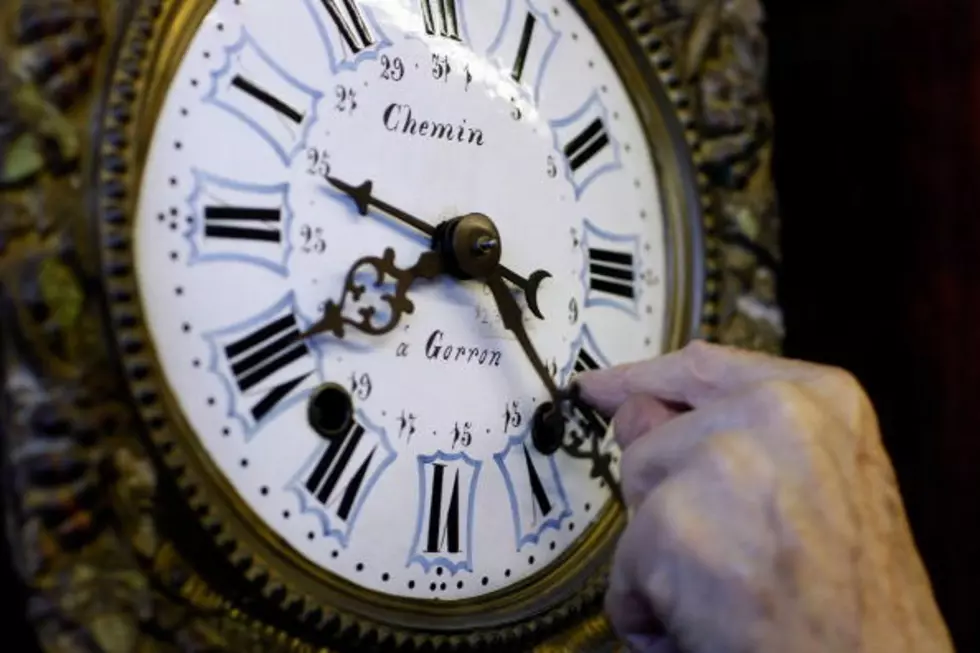
Everything You Always Wanted To Know About Daylight Saving Time (But Were Afraid To Ask)
Don't forget, Daylight Saving Time kicks in Sunday at 2am!
Here's a list of some random crazy factoids about DST that you might not have known:
Bombing Thwarted
In September 1999, the West Bank was on Daylight Saving Time while Israel had just switched back to standard time. West Bank terrorists prepared time bombs and smuggled them to their Israeli counterparts, who misunderstood the time on the bombs. As the bombs were being planted, they exploded--one hour too early--killing three terrorists instead of the intended victims--two busloads of people.
Halloween Trick-or-Treaters
Through 2006, Daylight Saving Time in the U.S. ended a few days before Halloween. Children’s pedestrian deaths are four times higher on Halloween than on any other night of the year. A new law to extend DST to the first Sunday in November took effect in 2007, with the purpose of providing trick-or-treaters more light and therefore more safety from traffic accidents.
Chaos of Non-Uniform DST
Widespread confusion was created during the 1950s and 1960s when each U.S. locality could start and end Daylight Saving Time as it desired. One year, 23 different pairs of DST start and end dates were used in Iowa alone. For exactly five weeks each year, Boston, New York, and Philadelphia were not on the same time as Washington D.C., Cleveland, or Baltimore--but Chicago was. And, on one Ohio to West Virginia bus route, passengers had to change their watches seven times in 35 miles! The situation led to millions of dollars in costs to several industries, especially those involving transportation and communications. Extra railroad timetables alone cost the today's equivalent of over $12 million per year.
Radio Stations
AM radio signals propagate much further at night than during the day. During daytime, more stations in neighboring areas can broadcast on the same frequency without interfering with each other. Because of this situation, there are hundreds of stations licensed to operate only in the daytime. Daylight Saving Time can affect the bottom line of these daytime-only radio stations: during parts of the year it can cause the stations to lose their most profitable time of day--the morning drive time. The gain of an hour of daylight - and thus broadcast time - in the evening does not fully compensate for the morning loss.
Amtrak
To keep to their published timetables, trains cannot leave a station before the scheduled time. So, when the clocks fall back one hour in October, all Amtrak trains in the U.S. that are running on time stop at 2:00 a.m. and wait one hour before resuming. Overnight passengers are often surprised to find their train at a dead stop and their travel time an hour longer than expected. At the spring Daylight Saving Time change, trains instantaneously become an hour behind schedule at 2:00 a.m., but they just keep going and do their best to make up the time.
Violent Crime
A study by the U.S. Law Enforcement Assistance Administration found that crime was consistently less during periods of Daylight Saving Time than during comparable standard time periods. Data showed violent crime down 10 to 13 percent. It is clear that for most crimes where darkness is a factor, such as muggings, there are many more incidents after dusk than before dawn, so light in the evening is most welcome.
Antarctica
In Antarctica, there is no daylight in the winter and months of 24-hour daylight in the summer. But many of the research stations there still observe Daylight Saving Time anyway, to synchronize with their supply stations in Chile or New Zealand.
Indiana
Indiana has long been a hotbed of Daylight Saving Time controversy. Historically, the state's two western corners, which fall in the Central Time Zone, observed DST, while the remainder of the state, in the Eastern Time zone, followed year-round Standard Time. An additional complication was that five southeastern counties near Cincinnati and Louisville unofficially observed DST to keep in sync with those cities. Because of the longstanding feuds over DST, Indiana politicians often treated the subject gingerly. In 1996, gubernatorial candidate Rex Early firmly declared, "Some of my friends are for putting all of Indiana on Daylight Saving Time. Some are against it. And I always try to support my friends." In April 2005, Indiana legislators passed a law that implemented Daylight Saving Time statewide beginning on April 2, 2006.
Oil Conservation
Following the 1973 oil embargo, the U.S. Congress extended Daylight Saving Time to 8 months, rather than the normal six months. During that time, the U.S. Department of Transportation found that observing Daylight Saving Time in March and April saved the equivalent in energy of 10,000 barrels of oil each day - a total of 600,000 barrels in each of those two years.
Likewise, in 1986, Daylight Saving Time moved from the last Sunday in April to the first Sunday in April. No change was made to the ending date of the last Sunday in October. Adding the entire month of April to Daylight Saving Time is estimated to save the U.S. about 300,000 barrels of oil each year.
Beginning in 2007, Daylight Saving Time commenced on the second Sunday in March and ended on the first Sunday in November, thereby saving even more oil.
Births and Birthdays
While twins born at 11:55pm and 12:05am may have different birthdays, Daylight Saving Time can change birth order -- on paper, anyway. During the time change in the fall, one baby could be born at 1:55am and the sibling born ten minutes later, at 1:05am In the spring, there is a gap when no babies are born at all: from 2:00am to 3:00am.
In November 2007, Laura Cirioli of North Carolina gave birth to Peter at 1:32am and, 34 minutes later, to Allison. However, because Daylight Saving Time reverted to Standard Time at 2:00am, Allison was born at 1:06am.
[Originally published at Acurite.com]
More From 105.7 The Hawk









